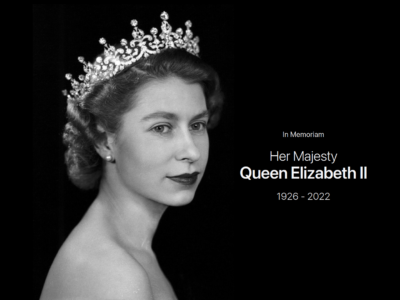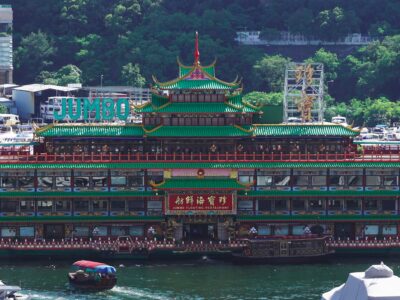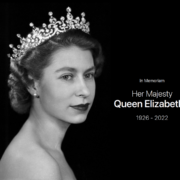Former Japanese Prime Minister Shinzo Abe shot dead
NARA, Japan, July 8 – Former Prime Minister Shinzo Abe, the longest-serving leader of modern Japan, was gunned down on Friday while campaigning for a parliamentary election, shocking a country where guns are tightly controlled and political violence almost unthinkable.
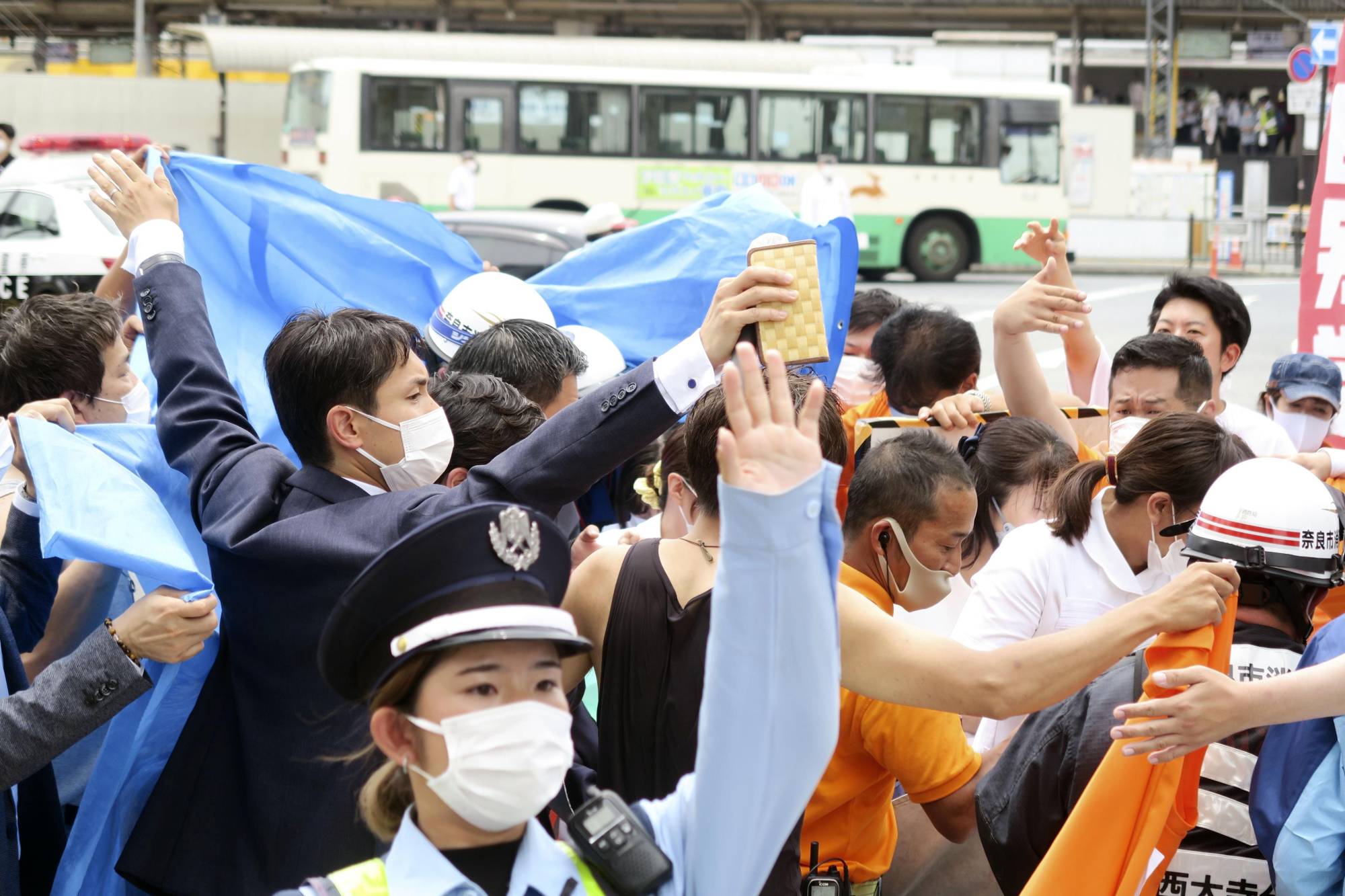
Abe, 67, was pronounced dead around five and a half hours after the shooting in the city of Nara. Police arrested a 41-year-old man and said the weapon was a homemade gun.
Abe was taken to hospital in cardiopulmonary arrest and showing no vital signs. He was declared dead at 5:03 p.m. (0803 GMT), having bled to death from deep wounds to the heart and the right side of his neck. Police said the gunman had admitted to shooting Abe with a handmade firearm he had fashioned out of metal and wood.
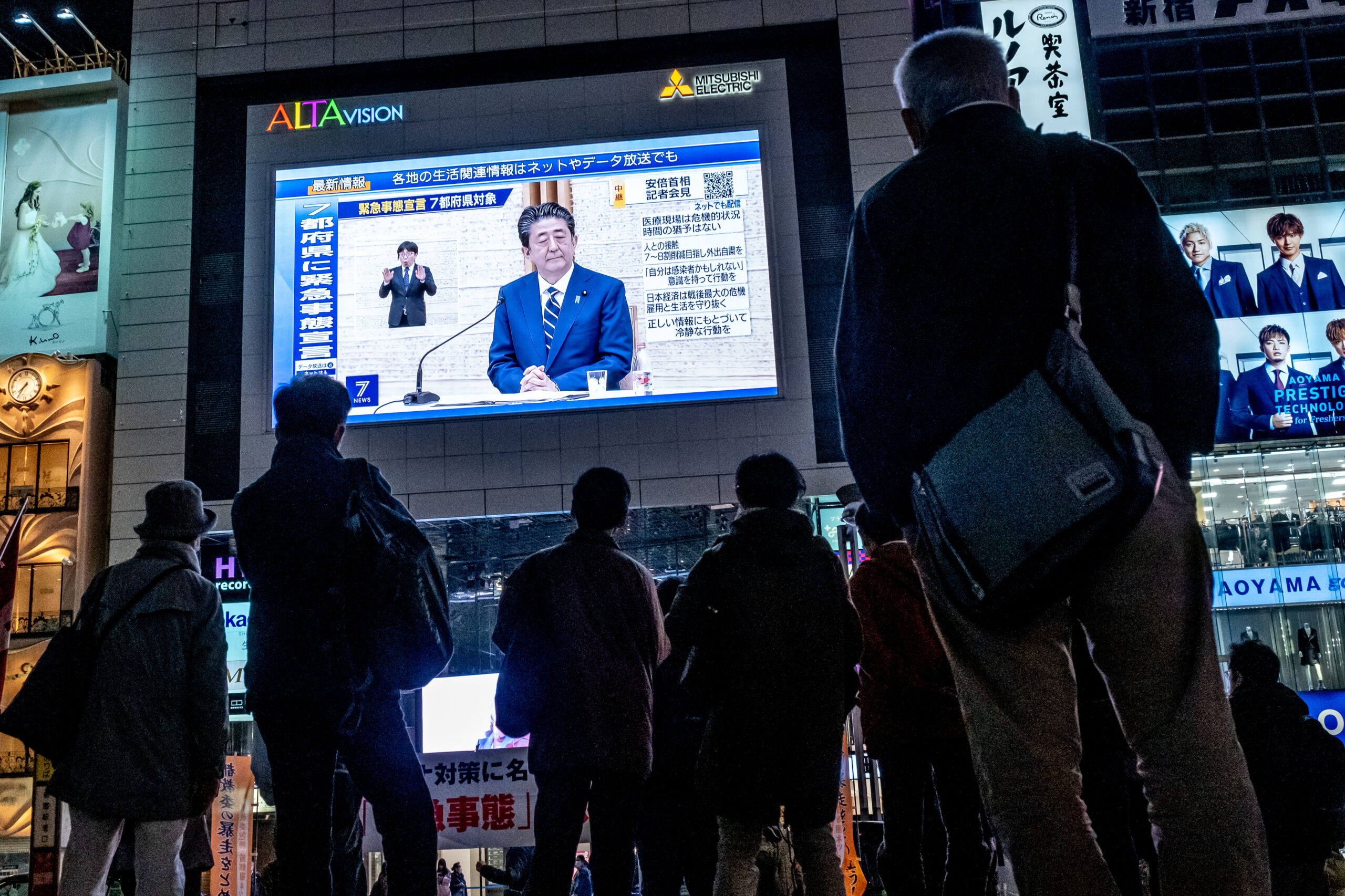
TOKYO, JAPAN – 2020/04/07: People seen standing in fron of a large television screen as the Japanese Prime Minister Shinzo Abe speaks at a press conference and addressing the citizen through TV.
Prime Minister Shinzo Abehas declared that Japan is in the state of emergency as non essential social gatherings will be banned and residents are asked to self-isolate as the COVID-19 coronavirus is continuing to spread. (Photo by Viola Kam/SOPA Images/LightRocket via Getty Images)

Shinzo Abe (安倍 晋三, Abe Shinzō, pronounced [abe ɕindzoː]; 21 September 1954 – 8 July 2022) was a Japanese politician who served as prime minister of Japan and President of the Liberal Democratic Party (LDP) from 2006 to 2007 and again from 2012 to 2020. He was the longest-serving prime minister in Japanese history. Abe also served as Chief Cabinet Secretary from 2005 to 2006 under Junichiro Koizumi and was briefly leader of the opposition in 2012.
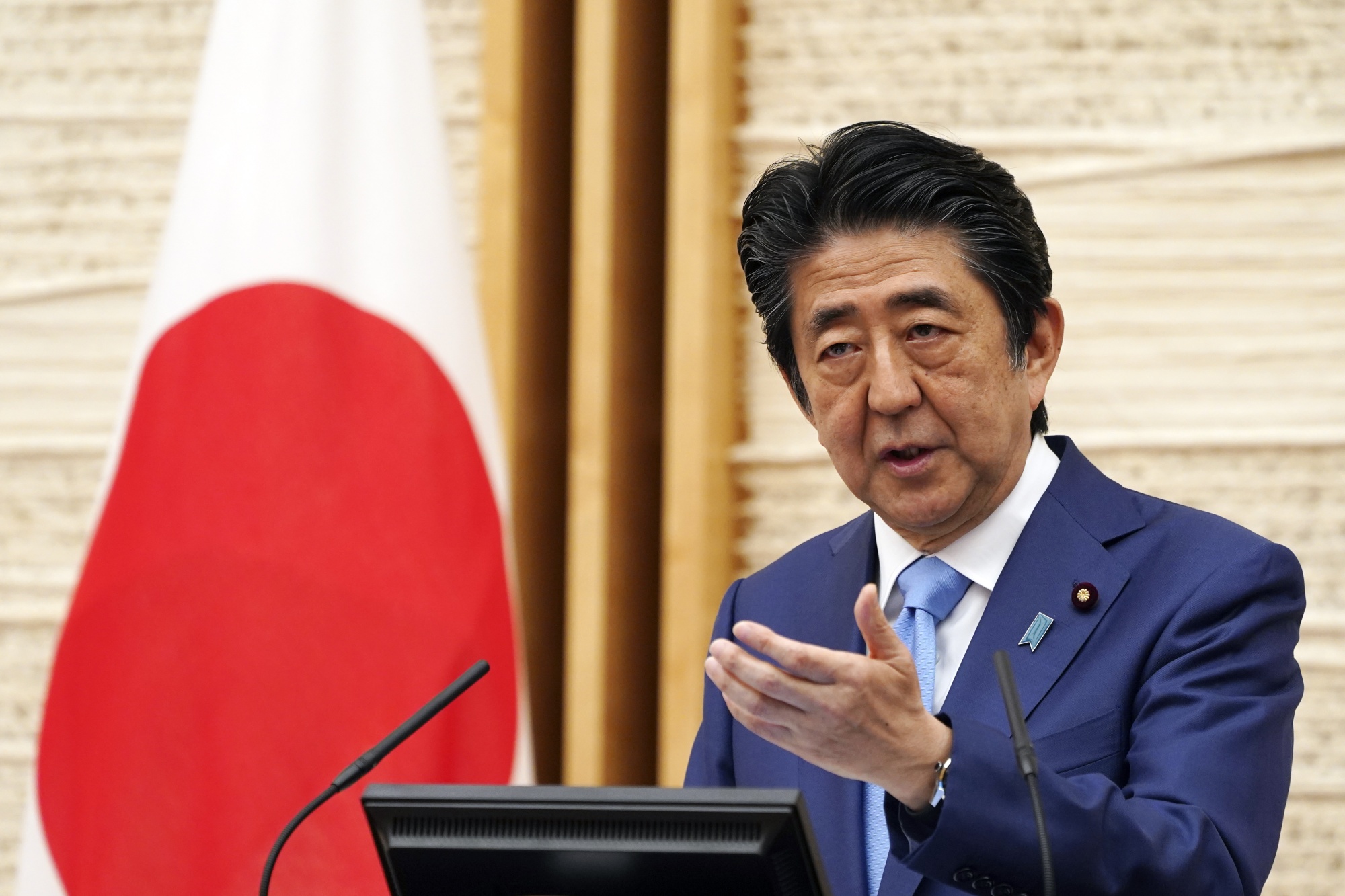
Born into a prominent political family, Abe was elected to the House of Representatives in the 1993 election. He was appointed Chief Cabinet Secretary by Prime Minister Junichiro Koizumi in September 2005, before replacing him as prime minister and LDP president in September 2006. He was subsequently confirmed as prime minister by a special session of the National Diet, becoming Japan’s youngest post-war prime minister, and the first to have been born after World War II.
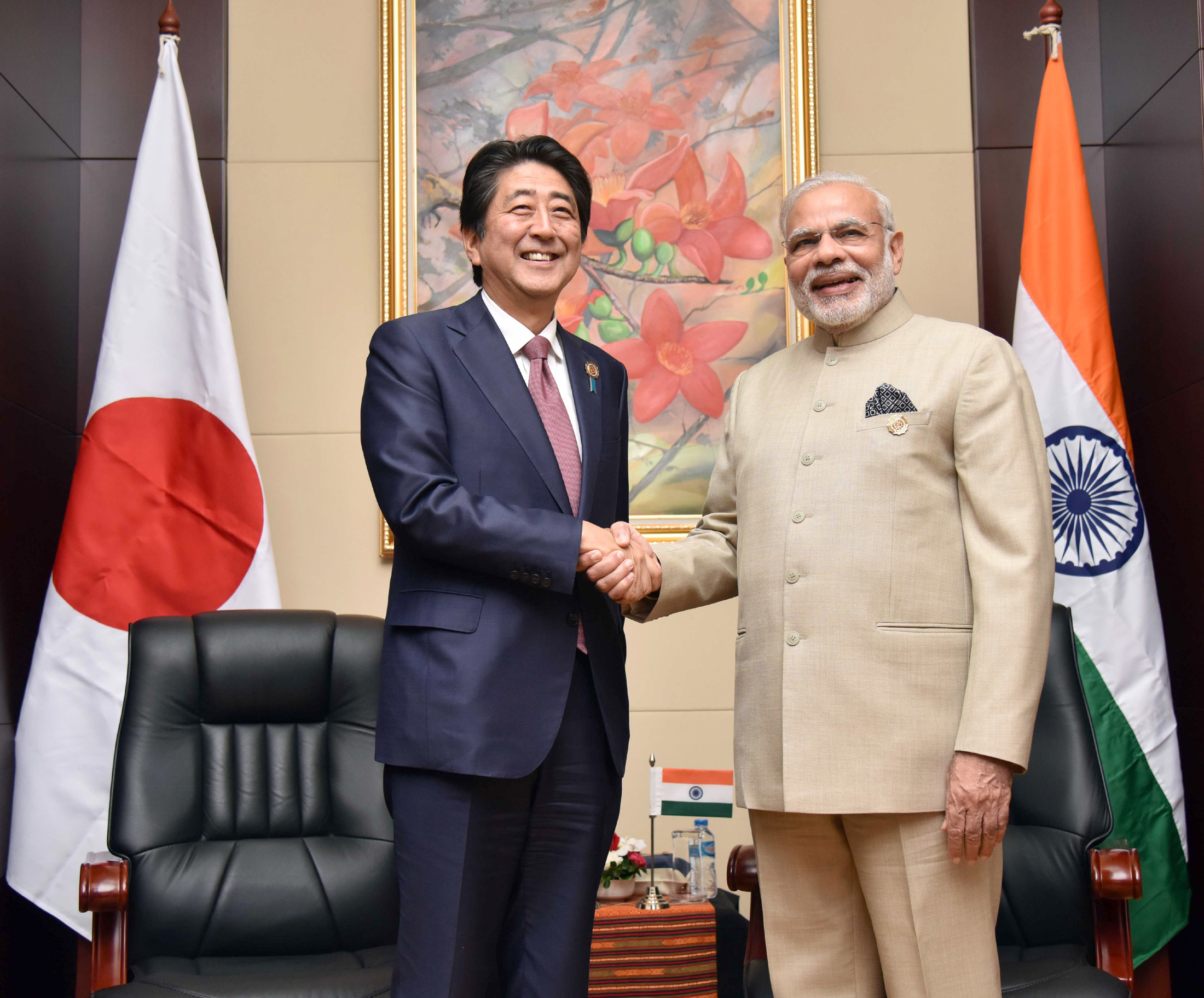
The Prime Minister, Shri Narendra Modi meeting the Prime Minister of Japan, Mr. Shinzo Abe, on sideline of the 14th ASEAN India and 11th East Asia Summits, at Vientiane, Lao PDR on September 07, 2016.
Abe resigned as prime minister just after one year in office due to medical complications from ulcerative colitis, shortly after his party lost that year’s House of Councillors election. He was replaced by Yasuo Fukuda, who became the first in a series of five prime ministers who each failed to retain office for more than sixteen months.
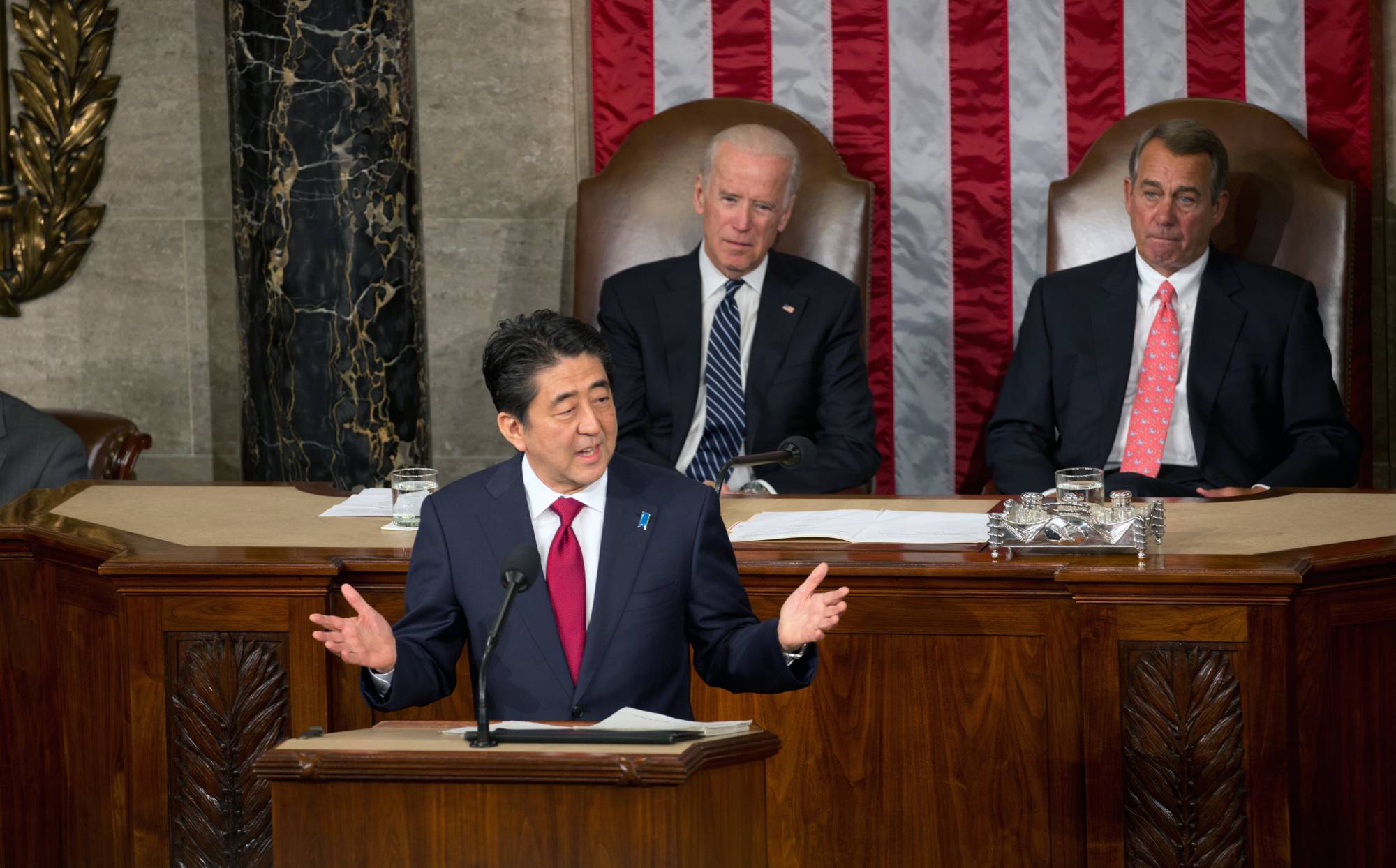
FILE Ñ Then-Prime Minister Shinzo Abe of Japan addresses a joint session of the U.S. Congress as then-Vice President Joe Biden, seated left, and House Speaker John Boehner (R-Ohio) look on in Washington on April 29, 2015. Abe, the longest-serving Japanese prime minister, was assassinated on Friday, July 8, 2022, in the city of Nara, Japan. He was 67. (Stephen Crowley/The New York Times)
After recovering from his illness, Abe staged an unexpected political comeback by defeating Shigeru Ishiba, the former defense minister, in a ballot to become LDP president for the second time in September 2012. Following the LDP’s landslide victory in the general election that December, he became the first former prime minister to return to the office since Shigeru Yoshida in 1948. He led the LDP to two further landslides in the 2014 and 2017 elections, becoming Japan’s longest-serving prime minister. In August 2020, Abe announced his second resignation as prime minister, citing a significant resurgence of his ulcerative colitis. He tendered his resignation on 16 September, upon the Diet electing Chief Cabinet Secretary Yoshihide Suga as his successor.

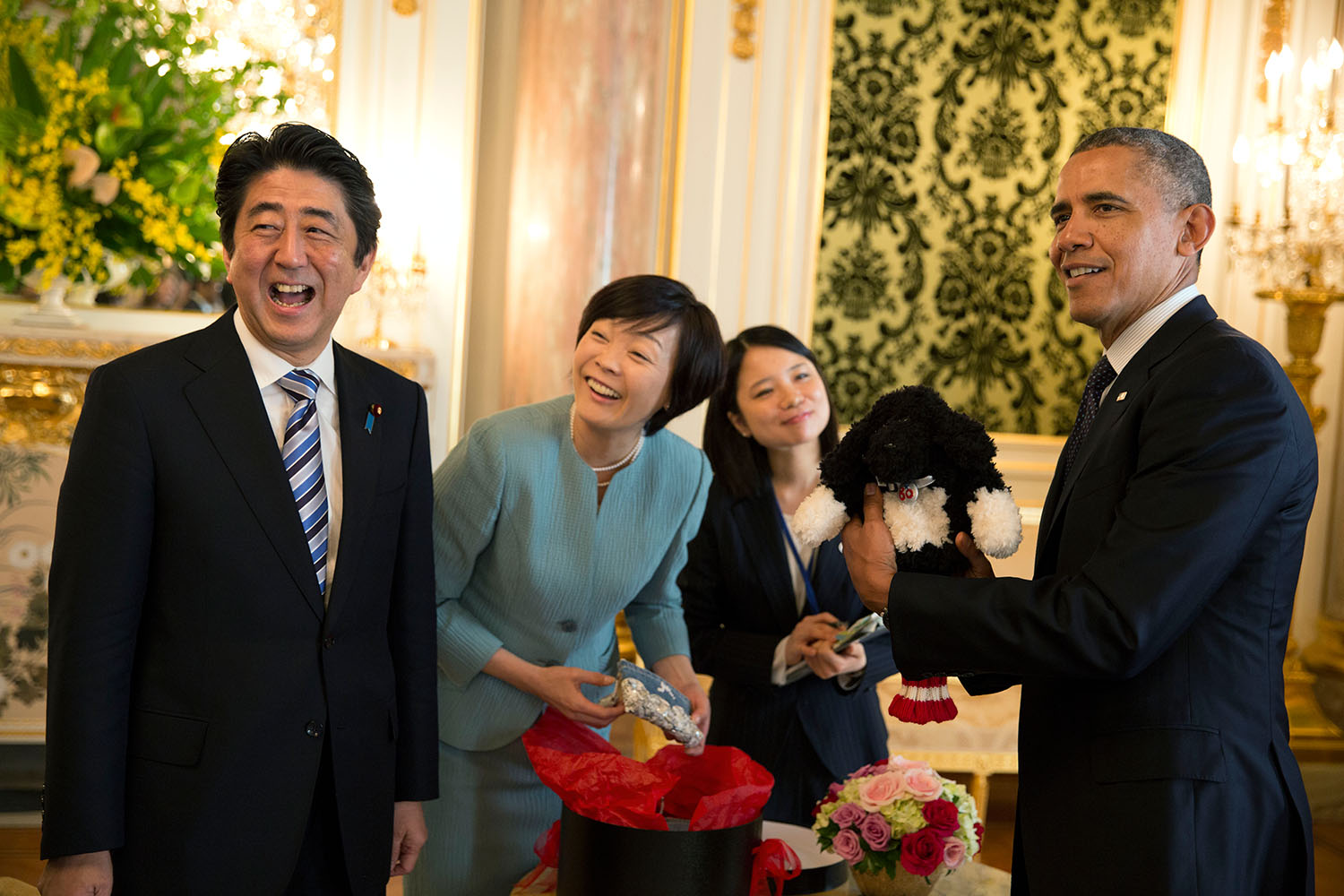
President Barack Obama holds up a Bo golf club cover, a gift given to him by Prime Minister Shinzo Abe and Mrs. Akie Abe at Akasaka Palace in Tokyo, Japan, April 24, 2104. (Official White House Photo by Pete Souza)

FILE Ñ Then-Prime Minister Shinzo Abe of Japan addresses a joint session of the U.S. Congress as then-Vice President Joe Biden, seated left, and House Speaker John Boehner (R-Ohio) look on in Washington on April 29, 2015.. (Stephen Crowley/The New York Times)
Abe was a conservative whom political commentators widely described as a right-wing Japanese nationalist. A member of the Nippon Kaigi, he held negationist views on Japanese history,including denying the role of government coercion in the recruitment of comfort women during World War II, a position which created tension particularly with neighboring South Korea. He was considered a hard-liner with respect to Japan’s military policies. In 2007, he was the initiator of the Quadrilateral Security Dialogue (QUAD) during his first tenure as prime minister, aimed at resisting China’s rise as an economic and military superpower.
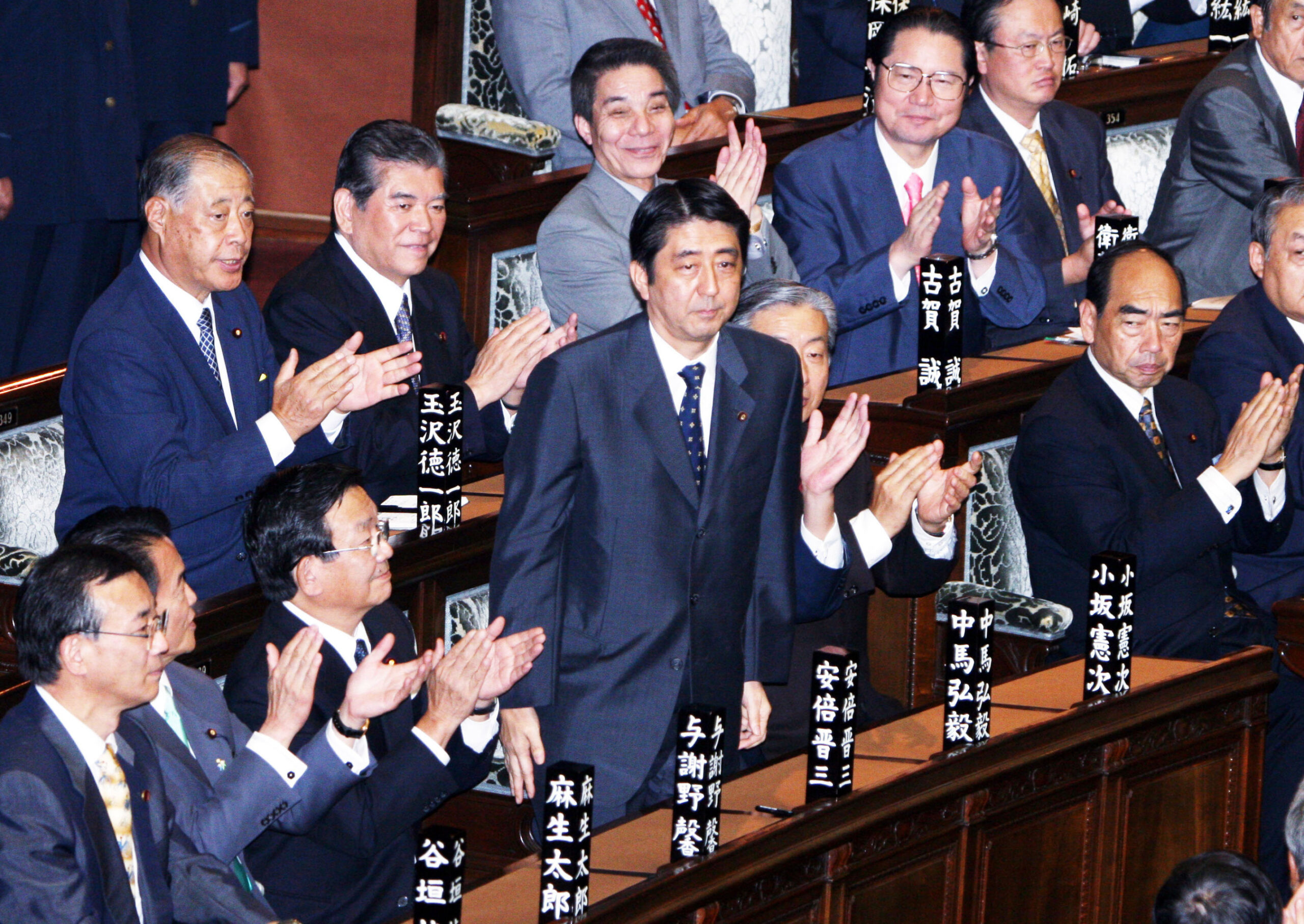
Shinzo Abe receives a round of applause from his parliamentary counterparts after his election as Prime Minister in Tokyo, Tuesday, September 26, 2006.
Photographer: Haruyoshi Yamaguchi/ Bloomberg News
He advocated reforming the Japan Self-Defense Forces (JSDF) by revising Article 9 of the pacifist Japanese constitution that outlawed the country from declaring war or acquiring ballistic missiles and nuclear weapons. He enacted military reforms in 2015 that allowed Japan to exercise collective security and JSDF deployments overseas, the passage of which was controversial and met with large protests.Abe’s premiership was also known for his attempts to counter Japan’s economic stagnation, nicknamed “Abenomics”.In 2019, Abe’s government initated a trade war with South Korea.

Abe was assassinated on 8 July 2022 in Nara by a former Japan Maritime Self-Defense Force (JMSDF) member who used a homemade firearm resembling a double-barreled shotgun. Abe had been delivering a campaign speech near the north exit of Yamato-Saidaiji Station in support for fellow LDP party member Kei Satō for the House of Councillors election.
Abe was born in Tokyo on Sept. 21, 1954. After graduating from the capital’s Seikei University in 1977, he moved to the U.S. and spent three semesters at the University of Southern California, studying English, political science, history and international relations, according to USC.
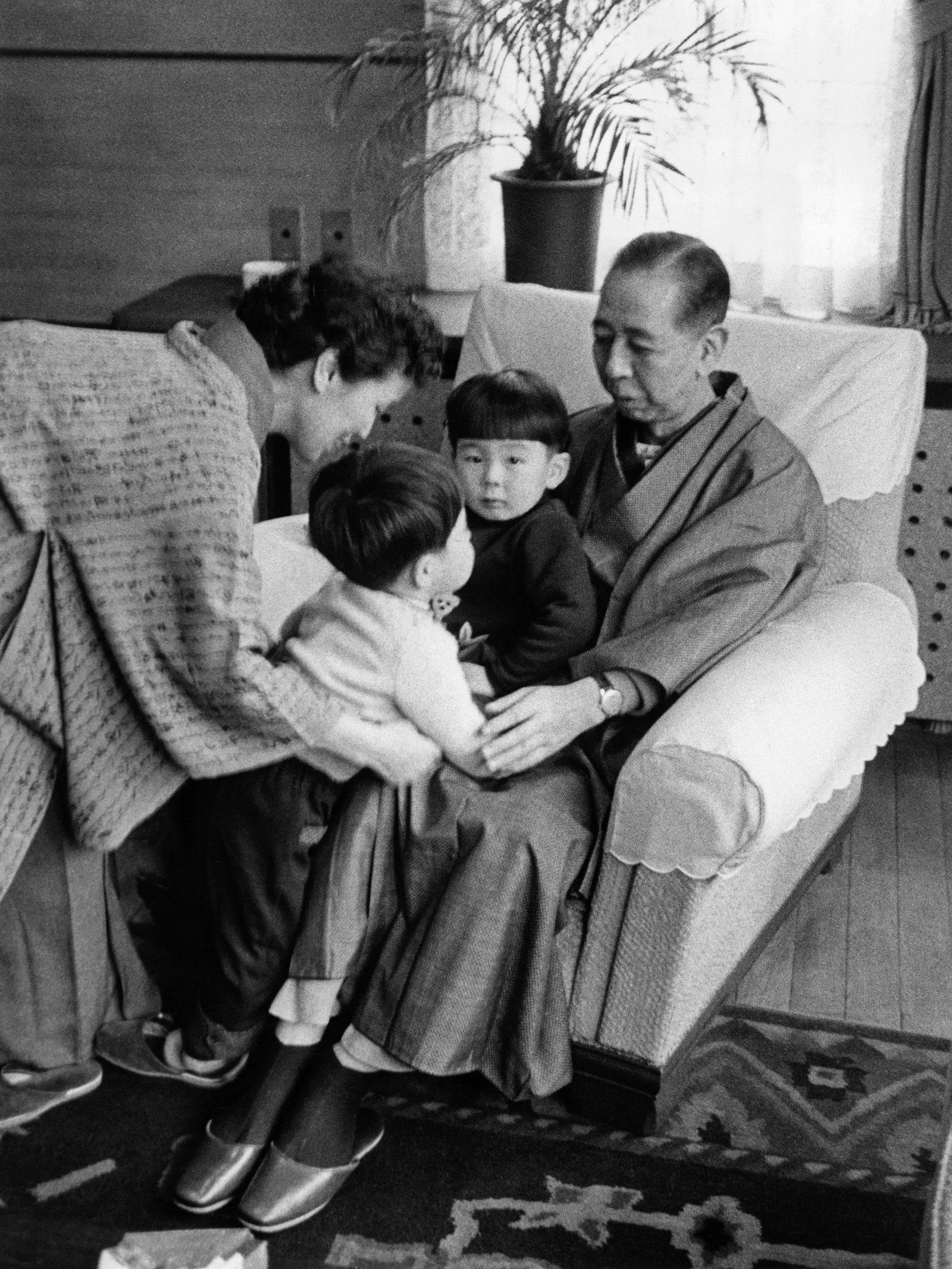
Abe belonged to a prominent political family. He was the grandson of Nobusuke Kishi, a World War II-era official who went on to become prime minister. (Kishi also suffered an assassination attempt, a stabbing, which he survived.) And Abe’s father, Shintaro Abe, was a foreign minister.
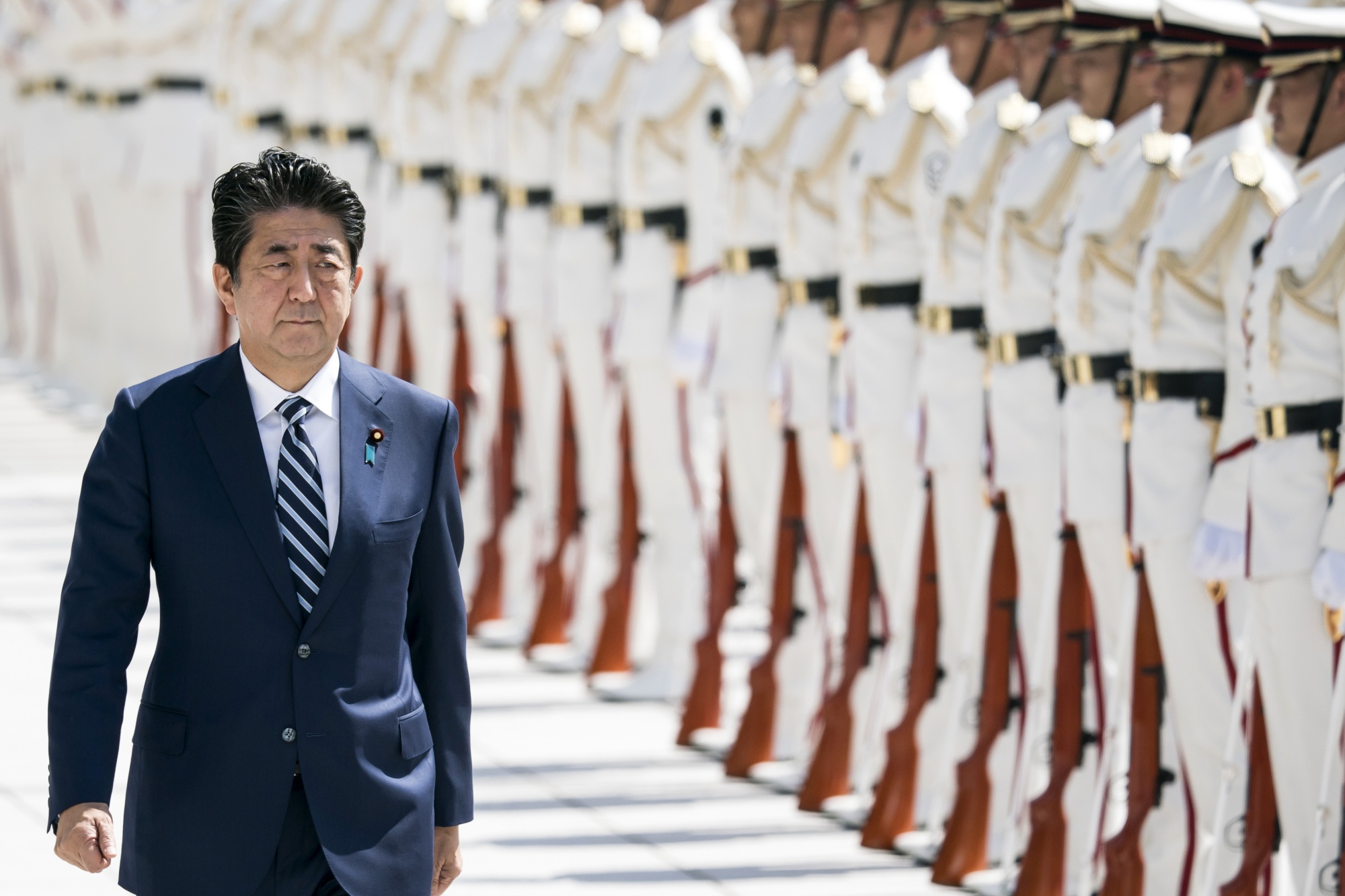
But it was Shinzo Abe who would serve longer than any other — as prime minister from 2006 to 2007 and again from 2012 to 2020.
He pledged to “take back Japan” to restore its pre-WWII position as Asia’s preeminent power and its economic dynamism of the 1960s.
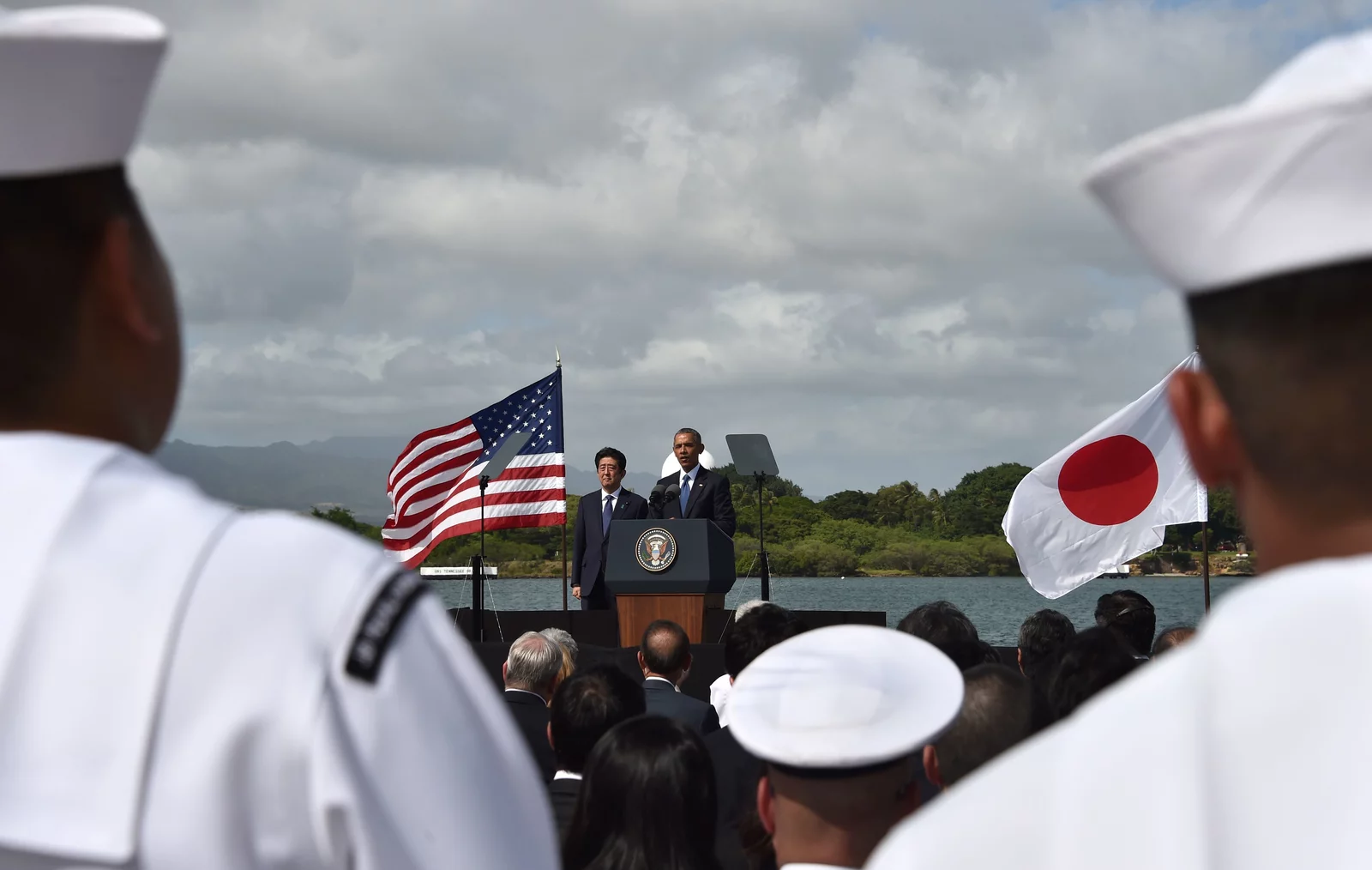
Yet while “nostalgia was a potent vehicle for mobilizing political action,” Harris said, Abe “wasn’t just recreating the past, he was actually trying to make a new Japan.”In a 2016 speech, Abe said, “We should look to the future, rather than worry about the present.”

